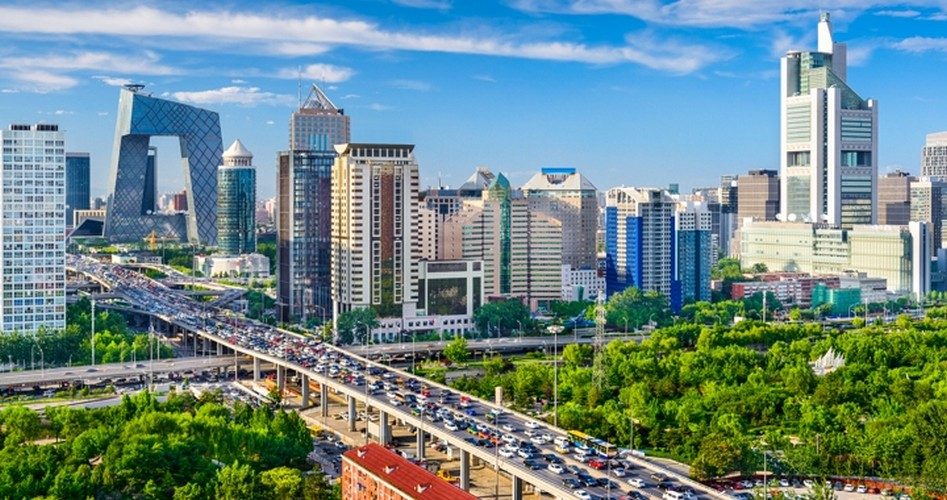
Thanks to “diminished financial stability,” S&P Global Ratings downgraded China’s credit rating for the first time since 1999, adding, “China’s prolonged period of strong credit [debt] growth has increased its economic and financial risks. Although this credit [debt] growth had contributed to strong real gross domestic product growth and higher asset prices, we believe it has also diminished financial stability.”
The downgrade by S&P is the second one this year for China — Moody’s Investors Service dropped China’s rating in May — and was preceded by a warning from the International Monetary Fund (IMF) in August that China’s growing debt binge was putting its economy into jeopardy.
The response by Chinese officials was as predictable as it was silly. It said that since China’s asset base is so large, the risks that S&P and Moody’s perceive are overstated. So-called scholars at the Chinese Academy of Social Sciences (CASS) concluded, in essence, that debt of such magnitude, estimated to be in excess of $27 trillion, really didn’t matter and was no cause for alarm. In layman’s terms, the “scholars” were suggesting that although the owner of a mansion had mortgaged it to the hilt, it was still worth more than the mortgage and so there is nothing to worry about.
But S&P thinks there’s plenty to worry about, as did Moody’s back in May. The amount China has borrowed to continue to fund its economic growth has quadrupled in just the last seven years and now represents more than 260 percent of the country’s entire economic output in a year. Moody’s noted that the growth rate of China’s debt is 15 percent a year, more than twice the growth rate of its economy.
And those assumptions and estimates are based on data the Chinese government itself provides which, to say the least, are questionable if not downright fraudulent. Many of the loans are being issued on speculative real-estate projects (remember China’s “ghost cities”?). There are the “shadow banking” practices where loans are made and not recorded or counted. So when those loans go into default, they don’t show up in government statistics.
S&P’s downgrade mirrors Moody’s, which moved China’s credit rating from “high quality and very low credit risk” to “upper-medium grade and low credit risk.” In addition, Moody’s moved China’s outlook from “stable” to “negative,” citing the “material rise” in the country’s debt levels and the burden it places on the economy to service it. Fitch Ratings has made the same downgrade of China’s creditworthiness, and for the same reasons.
The IMF’s report in August was equally disturbing, calling China’s rapidly accelerating growth as “dangerous,” especially as the country tries to meet its stated plan to double the size of its economy between 2010 and 2020. That would move China’s debt from 260 percent of GDP to an unsustainable 300 percent in just three years. The IMF also expressed concerns over the Chinese government’s plan to fuel that growth by expanding spending for more infrastructure programs while letting state banks take on ever-higher-risk debt to fund speculative real-estate developments.
The IMF noted something else that is causing concern to the credit rating agencies: Each dollar (or yuan, in this case) of debt incurred “becomes less effective as a means of stimulating [economic] activity” adding that “China needed three times as much credit [debt] in 2016 to achieve the same amount of growth as in 2008.”
This decreasing clout of additional debt was pointed out at Seeking Alpha in a study done five years ago. The author showed that in the United States from 1960 to 1980 “one dollar of debt had an incremental impact of 61 cents on the GDP” while from 1980 to 2000, “one dollar of debt had in incremental impact of 44 cents on the GDP.”
The bad news is that the more debt, the less impact it has on the GDP. From 2000 to 2011, according to the author, “for every one dollar of debt, the incremental impact on GDP was just 19 cents.”
Not only is the amount of “bang for the buck” declining in China, the cost to service the debt continues to escalate. Colloquially speaking, China’s economy is not only losing airspeed, the debt service is also causing it to lose altitude. As China’s is the second-largest economy in the world, the ripple effect of a default would be enormous. It could be the “exogenous” event that Wall Street has not counted on to be the pinprick that punctures the stock-market bubble.
Image: Beijing Central Business District
An Ivy League graduate and former investment advisor, Bob is a regular contributor to The New American magazine and blogs frequently at LightFromTheRight.com, primarily on economics and politics. He can be reached at [email protected].



